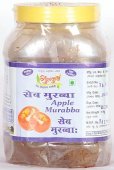Malu, Mālū, Mālu, Maḻu: 14 definitions
Introduction:
Malu means something in Hinduism, Sanskrit, Marathi, biology, Tamil. If you want to know the exact meaning, history, etymology or English translation of this term then check out the descriptions on this page. Add your comment or reference to a book if you want to contribute to this summary article.
Images (photo gallery)
In Hinduism
Shilpashastra (iconography)
Source: Shodhganga: The significance of the mūla-beras (śilpa)Malu (“axe”) refers to one of the several “attributes” (āyudha) or “accessories” of a detiy commonly seen depicted in Hindu iconography, defined according to texts dealing with śilpa (arts and crafs), known as śilpaśāstras.—The śilpa texts have classified the various accessories under the broad heading of āyudha or karuvi (implement), including even flowers, animals, and musical instruments. Some of the implements of war mentioned are, for example, Malu.

Shilpashastra (शिल्पशास्त्र, śilpaśāstra) represents the ancient Indian science (shastra) of creative arts (shilpa) such as sculpture, iconography and painting. Closely related to Vastushastra (architecture), they often share the same literature.
Biology (plants and animals)
Source: Wisdom Library: Local Names of Plants and DrugsMalu [मालू] in the Hindi language is the name of a plant identified with Phanera vahlii (Wight & Arn.) Benth. from the Caesalpiniaceae (Gulmohar) family having the following synonyms: Bauhinia racemosa, Bauhinia vahlii. For the possible medicinal usage of malu, you can check this page for potential sources and references, although be aware that any some or none of the side-effects may not be mentioned here, wether they be harmful or beneficial to health.
Source: Google Books: CRC World Dictionary (Regional names)1) Malu in Guinea is the name of a plant defined with Oryza sativa in various botanical sources. This page contains potential references in Ayurveda, modern medicine, and other folk traditions or local practices It has the synonym Oryza sativa var. affinis Körn. (among others).
2) Malu in India is also identified with Bauhinia vahlii It has the synonym Bauhinia vahlii Fern.-Vill. (etc.).
Example references for further research on medicinal uses or toxicity (see latin names for full list):
· J. SouthW. Agric. Univ. (1994)
· Chin. J. Rice Sci. (1996)
· Nomenclator Botanicus (1821)
· Indian Forester (1952)
· Proceedings of the Indian Science Congress Association (1987)
· Prodromus Florae Peninsulae Indiae Orientalis (1834)
If you are looking for specific details regarding Malu, for example diet and recipes, extract dosage, side effects, chemical composition, health benefits, pregnancy safety, have a look at these references.

This sections includes definitions from the five kingdoms of living things: Animals, Plants, Fungi, Protists and Monera. It will include both the official binomial nomenclature (scientific names usually in Latin) as well as regional spellings and variants.
Languages of India and abroad
Marathi-English dictionary
Source: DDSA: The Molesworth Marathi and English Dictionarymālū (मालू).—f A whitish and unctuous earth, a sort of steatite or soapstone. It is rubbed over writing-boards &c.
--- OR ---
māḷū (माळू).—m The piece of leather which surrounds the extremity of a mṛdaṅga or tabor, serving to brace it: also the bracing cord.
Marathi is an Indo-European language having over 70 million native speakers people in (predominantly) Maharashtra India. Marathi, like many other Indo-Aryan languages, evolved from early forms of Prakrit, which itself is a subset of Sanskrit, one of the most ancient languages of the world.
Sanskrit dictionary
Source: DDSA: The practical Sanskrit-English dictionaryMālu (मालु).—Name of a particular mixed tribe.
Derivable forms: māluḥ (मालुः).
See also (synonyms): mālla.
--- OR ---
Mālu (मालु).—f.
1) A kind of creeper.
2) A woman.
Derivable forms: māluḥ (मालुः).
Source: Cologne Digital Sanskrit Dictionaries: Edgerton Buddhist Hybrid Sanskrit DictionaryMālu (मालु).—(-latā; Sanskrit Lex. mālu, f.; = mālutā (2), māluvā; Pali māluvā; AMg. māluyā), a kind of creeper, which strangles trees (śāla trees are especially mentioned in Pali) on which it grows: jara śoṣayate naranārigaṇaṃ yatha mālu-latā ghanaśālavanaṃ Lalitavistara 174.19 (verse).
Source: Cologne Digital Sanskrit Dictionaries: Shabda-Sagara Sanskrit-English DictionaryMālu (मालु).—m.
(-luḥ) 1. A woman. 2. A sort of creeper. “pātlatā”. E. mal to hold, Unadi aff. uṇ .
Source: Cologne Digital Sanskrit Dictionaries: Monier-Williams Sanskrit-English Dictionary1) Mālu (मालु):—m. Name of a [particular] mixed caste, [Brahma-purāṇa] ([varia lectio] mālla)
2) Name of one of Śiva’s attendants, [cf. Lexicographers, esp. such as amarasiṃha, halāyudha, hemacandra, etc.]
3) f. a species of creeper (= pattra-vallī, or pattra-latā), [Uṇādi-sūtra i, S [Scholiast or Commentator]]
4) a woman, [cf. Lexicographers, esp. such as amarasiṃha, halāyudha, hemacandra, etc.]
Source: Cologne Digital Sanskrit Dictionaries: Yates Sanskrit-English DictionaryMālu (मालु):—(luḥ) 2. m. A sort of creeper.
[Sanskrit to German]
Sanskrit, also spelled संस्कृतम् (saṃskṛtam), is an ancient language of India commonly seen as the grandmother of the Indo-European language family (even English!). Closely allied with Prakrit and Pali, Sanskrit is more exhaustive in both grammar and terms and has the most extensive collection of literature in the world, greatly surpassing its sister-languages Greek and Latin.
Kannada-English dictionary
Source: Alar: Kannada-English corpusMālu (ಮಾಲು):—
1) [verb] to change one’s perpendicular position and lean or incline on; to slant.
2) [verb] to hang loosely from above.
--- OR ---
Mālu (ಮಾಲು):—
1) [noun] the condition of being slant, oblique; obliqueness.
2) [noun] the condition of being squinted.
--- OR ---
Mālu (ಮಾಲು):—[noun] merchandise; goods; commodity.
--- OR ---
Mālu (ಮಾಲು):—
1) [noun] a relatively huge building, as a palace.
2) [noun] a sub-division of a tāluka.
3) [noun] a sum of money demanded by a government for its support or for specific facilities or services, levied upon incomes, property, sales, etc.; tax.
Kannada is a Dravidian language (as opposed to the Indo-European language family) mainly spoken in the southwestern region of India.
Nepali dictionary
Source: unoes: Nepali-English DictionaryMalu (मलु):—n. Bot. camel's foot climber;
Nepali is the primary language of the Nepalese people counting almost 20 million native speakers. The country of Nepal is situated in the Himalaya mountain range to the north of India.
See also (Relevant definitions)
Starts with (+78): Malu bandyul, Malu creeper, Malu i banax, Malu i seget, Malu ma betende, Malu syisyet, Malu-dena-panguwa, Malu-keselken, Malu-malu, Malubago, Maluda, Maludhana, Maludhani, Maludu, Maluga, Malugadi, Malugam, Malugannu, Maluh, Maluhani.
Ends with (+49): Alimalu, Alumalu, Amalu, Asalmalu, Beuphu ba malu, Bonta chamalu, Bontachamalu, Boramalu, Calatimalu, Camalu, Chamalu, Cimmalu, Damalu, Duri semalu, Erimalu, Gaddemadirumalu, Gamalu, Gammalu, Gan-malu, Garmalu.
Full-text (+46): Maludhana, Malum, Malulata, Maluval, Malukkulukku, Sebu, Malukulai, Malumattai, Maluva, Rumput malu-malu, Maluvetu, Malu-malu, Maludhani, Malla, Malu bandyul, Malu ma betende, Putri malu, Malu syisyet, Gan-malu, Malu creeper.
Relevant text
Search found 7 books and stories containing Malu, Mālū, Mālu, Maḻu, Māḷū, Mazhu; (plurals include: Malus, Mālūs, Mālus, Maḻus, Māḷūs, Mazhus). You can also click to the full overview containing English textual excerpts. Below are direct links for the most relevant articles:
The Religion and Philosophy of Tevaram (Thevaram) (by M. A. Dorai Rangaswamy)
Chapter 4.6 - (e) Symbology of Malu (the axe) < [Volume 2 - Nampi Arurar and Mythology]
Chapter 4.6 - (a) Weapons and Ornaments of Shiva < [Volume 2 - Nampi Arurar and Mythology]
Chapter 4.6 - (b) Symbology of Man (the deer) < [Volume 2 - Nampi Arurar and Mythology]
Village Folk-tales of Ceylon (Sri Lanka), vol. 1-3 (by Henry Parker)
Story 70 - The Jackal And The Leopard < [Part II (d) - Stories of the Rodiyas]
Later Chola Temples (by S. R. Balasubrahmanyam)
Temples in Nidur < [Chapter II - Temples of Kulottunga I’s Time]
Temples in Tiruvennainallur < [Chapter XII - Temples of Kulottunga III’s Time]
Gati in Theory and Practice (by Dr. Sujatha Mohan)
Dance movements found in sculptures < [Chapter 4 - Practice of Gati]
Puranic encyclopaedia (by Vettam Mani)
Middle Chola Temples (by S. R. Balasubrahmanyam)
Temples in Attur < [Chapter II - Temples of Rajaraja I’s Time]
Related products
(+4 more products available)







